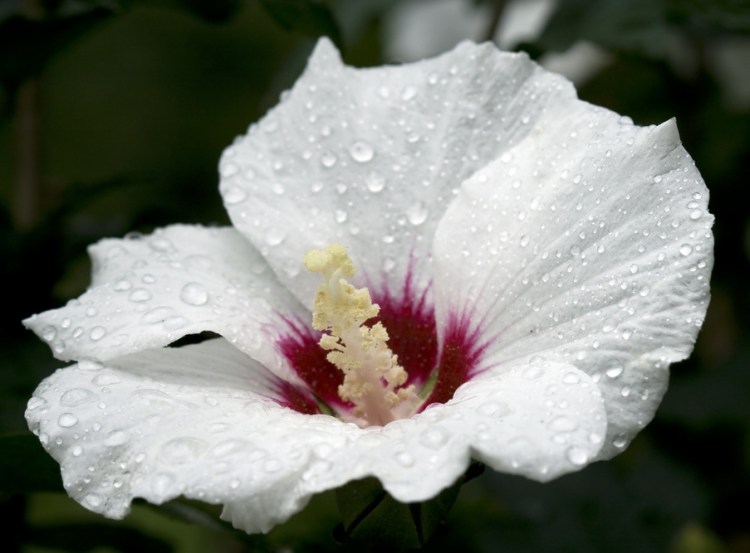Rose of Sharon is an odd sort of plant that can be tricky to grow. Why bother then? Because for a few weeks each year it can be absolutely stunning.
The botanical name for this woody plant – either a small tree or a large shrub, depending on how you prune it – is Hibiscus syriaca. Not to be confused with the hibiscus perennial (common name mallow), or the tropical hibiscus, which is gorgeous in its own right.
Most of the year, rose of Sharon looks twiggy and ungainly. It may die back in extreme winters and heavy snows can bend or even break it.
But in mid- to late August, the hibiscus produces a profusion of large blossoms that brighten up an otherwise dull time in the garden. The most common color for rose of Sharon is in the lavender range, but they come in many other colors, including white, peach, pink, near red and almost blue. For that brief and glorious spurt of color, they are worth all of the problems.
You can plant them from now until October. They want full sun to light shade and well-drained soil.
Pick a location with lots of space because Hibiscus syriaca can be quite wide and you don’t want to lose your blooms by pruning to keep the shrub small.
Dig a hole as deep as the root ball is tall and at least twice as wide. Add a little compost if the soil is poor, but don’t fertilize.
Water heavily when planting and at least every other day until the ground freezes. And get ready for a vibrant show in August when most other trees and shrubs are green or brown.
Send questions/comments to the editors.


